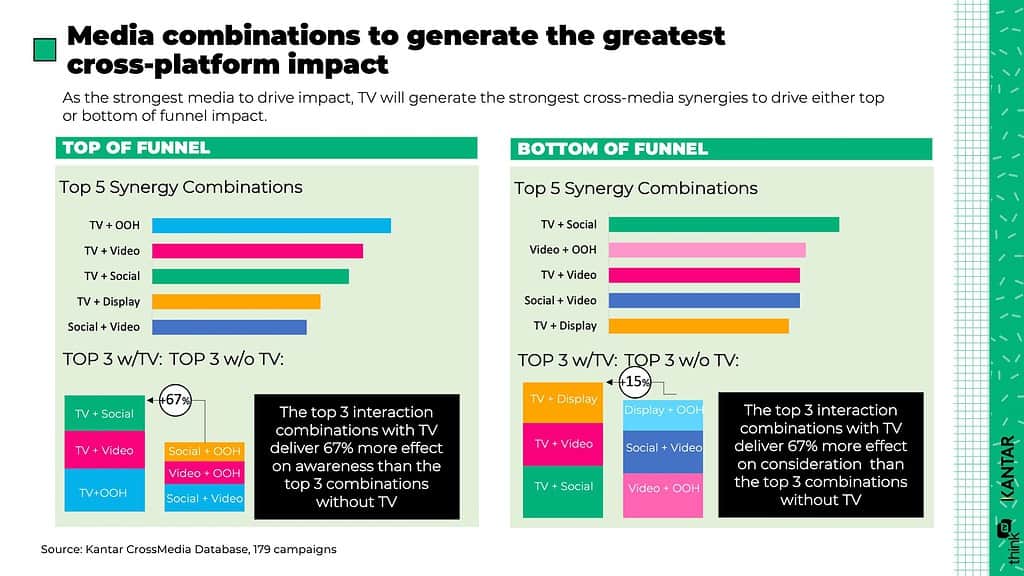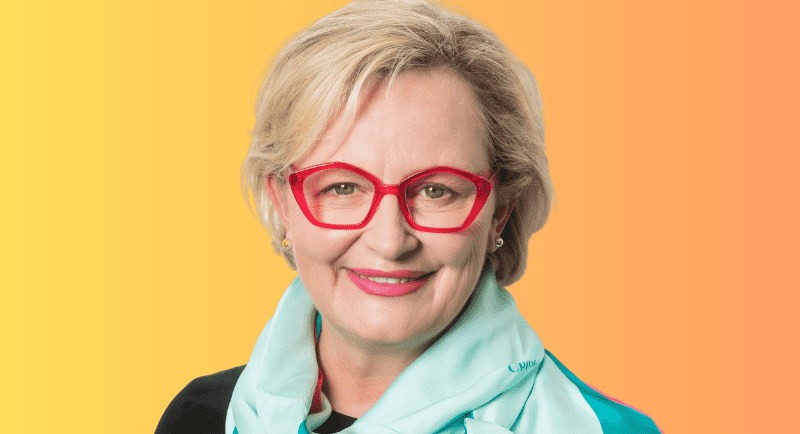New research around marketing budgets shows each channel plays a unique role in the marketing mix. So, before swapping one channel out for another, Kim Portrate explains what you need to consider.
With the talk of economic headwinds still lingering in the air, CFOs will be sizing up where they can cut costs.
As News Corp’s Robert Thompson told a Morgan Stanley conference recently, marketing budgets are often the first cost centre to be hit.
“The first thing they do is hit marketing because it’s easy. It seems easy,” he said. “But what is marketing? Marketing is communicating with your customers and your clients. If people are cutting themselves off from their customers, they’re doing themselves longer-term damage.”
I’m not going to extoll the virtues of continuing to invest in brands during economic downturns. There’s enough research available to support that.
Instead, I want to talk about how to protect your brands and keep the CFO happy at the same time.
Marketing budgets: Substituting channels dangerous
Smart brands know that they can’t completely stop advertising so instead, they look for cheaper ways to do it. As a result, they might consider substituting channels to invest in less expensive ones.
However, new research from Kantar shows this could be a dangerous move.
A meta-analysis of 179 real-world Aussie campaigns found that different channels play clear roles in the media mix and that while some perform well on their own, others need support channels to drive genuine brand impacts. Because of this, there’s no such thing as a like-for-like channel substitution.
For example, you might be thinking you could swap TV with out-of-home. However, the brand impact of TV is predominantly solus-driven while out-of-home is the exact opposite. That means most of out-of-home’s impact comes from other channels in the media mix. So, if you were to make that swap and save a few pennies, you’d find your campaign struggling to meet desired effects such as brand awareness, association and consideration.
And forget about swapping TV for social media. While TV works at both ends of the funnel, Kantar’s research finds social is best used at the bottom of the funnel and even then requires the support of other channels to really deliver on brand impacts.

Removing TV from the media mix will risk loss of brand impact
Of course, there are other factors to consider when reviewing your media mix. You should also consider:
ROI: Data from the Media Engine, which aggregates three years of campaign data across 10 categories and 60 brands, shows that TV, BVOD, and premium video have significantly higher ROI than other channels including OOH.
Reach: One of the reasons established media channels like TV remain super-effective is the speed at which reach can be built. While plenty of channels can reach large swathes of the Australian population, few can do it as quickly as TV. In a week, TV reaches 75 per cent of the country, and it does it via a modest number of linear and digital channels compared to a channel like OOH, which needs tens of thousands of sites across to deliver the same audience.
Targeting: Social channels have long claimed superiority in targeting as a reason to be included in the media mix, but with changes from the big tech players and privacy updates coming down the pipe, this is increasingly in question. Meanwhile, TV has refined its targeted approach via Broadcaster Video on Demand (BVOD) which now boasts Australia’s largest first-party data assets to leverage for targeted buys.
Brand Safety: 2022 was a year of advertising trust and brand safety with crackdowns on undisclosed data collection, breaches of personal data, and more. If you’re concerned about getting yourself into a brand safety pickle, TV can help. TV has a long-established brand safety record and is considered one of the safest advertising platforms available. Advertisers can be assured that their ads will not appear next to inappropriate or harmful content.

As marketing budgets increasingly come under the microscope, think long and hard before you make any channel substitutions.
The potential savings might turn your eye, but you’ll end up spending more in the long run as you try to replicate the performance of the channels you have removed from the mix.
• Kim Portrate (pictured above) is the CEO of ThinkTV
See also:
Need to trim ad spend? Kantar research suggests what you can’t afford to cut

